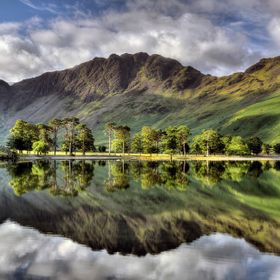
davebyford
FollowThe county of Norfolk is very predominantly flat with large lakes called 'Broads' many of which connect via inlets, rivers and canals to the sea. Most...
Read more
The county of Norfolk is very predominantly flat with large lakes called 'Broads' many of which connect via inlets, rivers and canals to the sea. Most are also connected together and the area is a major tourist attraction where visitors can hire various craft for exploring the Broads - most a large cruisers with accommodation on board.
The windmills are not used for traditional milling however, instead they pump water off the land and back into the dykes, canals and lakes.
Read less
The windmills are not used for traditional milling however, instead they pump water off the land and back into the dykes, canals and lakes.
Read less
Views
175
Likes
Awards
Fall Award 2020
Top Ranks
Same photographer See allBehind The Lens
Behind The Lens
Location
The Norfolk Broads are an extensive collection of interconnecting rivers and lakes in England. Most of the area is navigable and the lakes were formed by the gradual flooding of peat workings over many years. This photograph was taken in the early morning at Thurne Mill,Thurne in Norfolk and I've tried to capture the atsmosphere and charm of the region. As a self taught photographer I tend to ignore the usual rules and concentrate on capturing my own emotions as I felt them on the day which allows me to revist sites and come home with a very different shot each time.Time
The whole area has a number of foot bridges crossing the many inlets and 'staithes' which are the landing areas and jetties used for mooring, boarding and loading cargo. On this occasion I left home at 4.00am to drive to the region before walking around the staithes and canal paths until I found this viewpoint and waited for the sunrise. The shot was at around as the sun rose at around 9am.Lighting
Using natural light has both advantages and disadvantages. On the one hand you have little control but on the other no two photographers will shoot the same view in exactley the same way. For me natural light offers many opportunities to re-visit the sight at a different time and perhaps in different weather and shoot a completely different view and perspective.Equipment
For the shot I used a Canon 5D MKiii and tripod - essential in the breeze - together with a Canon 16-35mm lens and polarising filter.Inspiration
I love landscape photography more than any other subject and the Norfolk Broads, with their many mills, offer lots of opportunites.The windmills themselves were not used for grain but for pumping water from the various locks, broads and staithes to both maintain the water level and prevent flooding.Editing
My processing methods are kept as simple as possible. I take three images of each scene at different exposures then blend them if necessary using HDR within Photoshop then colour balance and the rusults. Often one image is enough though but HDR is useful in extreme lighting such midday when the shadows are harsh. However, when using HDR, I will normally overlay the HDR version with one of the orginal shots and belnd the the two as necessary to get a more natural look.In my camera bag
My kit consists of the Canon 5D Mkiii, Canon 50mm prime lens, Canon 24-105 lens and the canon 16-35mm zoom lens as well as various clamps - to secure the camera to a railing etc. if there's no room for a tripod. I also pack a remote shutter release to prevent camera shake.Feedback
I find landscapes very rewarding but they can also be frustrating too! Having travelled miles to a certain spot only to find the lighting is poor or the weather suddenly changes can be very disappointing but this is nature and we have to work with it. Sometimes I can find another viewpoint, sometimes it's not possible but that's all part of the challenge. Before travelling to any landscape I always research the area as much as possible and use two online sites when planning ahead which are invaluable. The first is to look for 'Tide Table' for your region or country. There is no point driving for hours to find the tide is in and you can't get down on the beach for the rockpools at dawn. The second is TPE - The Photographer's Ephemeris which you can find online and offers both free and paid versions. This is essential software which allows you to pin point your chosen destination exactly on a map. Then, by using the sliders, you can watch the sun (and moon) rising and rotate through to the night. The map will show you the source, height and direction of the sun and moon light as the hours pass as well as any shadows caused by hills and cliffs etc. that might spoil you view. Again, this can prevent a wasted trip or help you to choose a better vantage point for your shots.
























